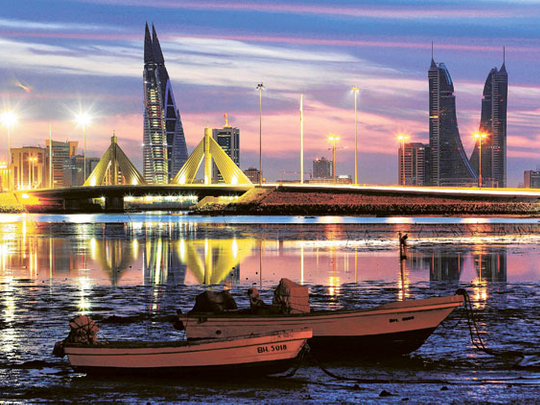
It is easy not to disagree with results of a recently published survey by Reuters with regard to growth levels of gross domestic product (GDP) in 2001 for the Gulf Cooperation Council (GCC) states.
Happily, all GCC economies except Bahrain are projected to score notable GDP growth rates.
The report puts the GDP growth rate for Bahrain at 2.7 per cent in 2011, down from 3.4 per cent in 2010.
Unfortunately, Bahrain's economy continues to suffer from the consequences of the political and security crisis engulfing the country since mid-February. Problems entail damaged confidence and a drop in business.
Last week, Bahrain Airport Services (BAS) reported a drop of 30 per cent in business at Bahrain International Airport this year. BAS cannot be blamed for linking the drop to socio-political troubles engulfing the kingdom.
Conversely, the report projects GDP growth rate of 4 per cent for Oman, hence no change from the earlier year.
Like Bahrain, the sultanate experienced dissent by angry protesters demanding solutions to outstanding challenges including jobs and administrative deficiencies. However, Oman stood out in undertaking prompt corrective measures including appropriating $2.6 billion (Dh9.5 billion) to pay for matters such as creating government jobs for locals.
The amount is sizable when compared to total spending of $21.1 billion for fiscal year 2011.
Rising spending
Clearly, rising spending should help compensate for negative effects relating to protests starting in the industrial town of Sohar. Still, the survey projects a GDP growth rate of 5.7 per cent for Saudi Arabia this year, in turn the highest in eight years.
Undoubtedly, the credit is partly reserved for positive spillover effects relating to the decision for spending an additional $130 billion to help pay for different socio-economic issues including soft loans and allowances for the unemployed.
Revealed earlier in the year, the amount was meant to be spent over a span of several years, but it recently emerged that of this some $47 billion and $35 billion is sanctioned for 2011 and 2012, respectively. In reality, the $130 billion figure is sizable by virtue of comprising around 30 per cent of Saudi Arabia's GDP. Undoubtedly, such an amount leaves its imprint on economic results.
Likewise, the assumption of the UAE economy growing by 3.7 per cent this year falls in line with 3.5 per cent growth projected by the IMF, partly reflecting success in overcoming Dubai's debt difficulties.
In addition, the survey cannot be blamed for assuming a GDP growth rate of around 17 per cent for Qatar. The figure is not only the highest in the GCC region, but one of the highest worldwide.
A steady rise in spending is credited for this extraordinary result, as evidenced in appropriating $38.5 billion for fiscal year 2011-2012, which commenced in April.
The figure represents a rise of 25 per cent compared to the previous budget, a sizable increase by any standard.
Still, the report puts Kuwait's GDP growth rate of 4.4 per cent for 2011 thanks to firm government spending.
Last week, the country's parliament approved the budget for fiscal year 2011-12 at $71 billion, up by 19 per cent compared to the earlier one.
Stronger public sector spending encourages private sector investors to follow suit.
Certainly, the timing of extra spending measures is not unintentional, coming against the ongoing Arab spring.
Spending levels
Still, steady oil prices make it possible for increasing spending levels, as petroleum resources make up around three quarters of treasury income across GCC states.
Factually, GCC countries prepared budgets of 2011 by assuming average oil prices of $50 to $80 per barrel, considerably below projected the level of $107 per barrel for the entire year.
The writer is a Member of Parliament in Bahrain.












